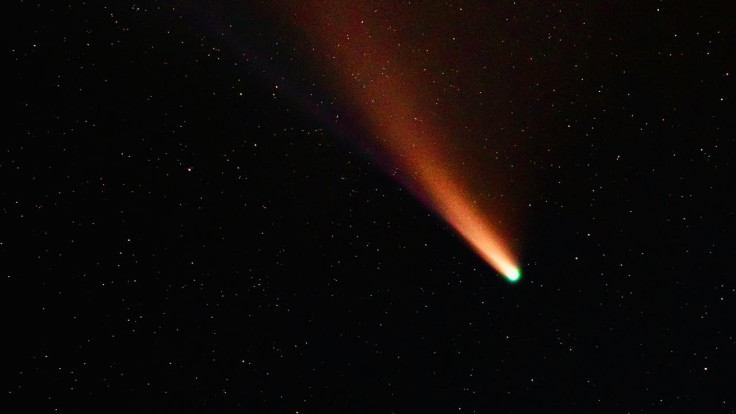
Space watchers are on edge as a mystery unfolds across the cosmos. While the interstellar comet 3I/ATLAS races towards the Sun, another icy traveller, 12P/Pons-Brooks, has astonished astronomers by emitting unusual radio signals.
The discovery has sparked intense speculation about what's happening deep beneath these ancient fragments of the solar system's birth—and what their strange emissions could mean for humanity's understanding of cometary physics.
For centuries, comets have inspired awe and superstition. Today, thanks to sophisticated radio telescopes and collaborations across continents, they're sources of hard science.
The latest data suggests we might be witnessing chemical fireworks unlike anything observed before, prompting astronomers to question whether 12P/Pons-Brooks is more active—and more revealing—than any other comet in its class.
Why The 3I/ATLAS Connection Fascinates Scientists
The excitement surrounding 3I/ATLAS forms the backdrop to this discovery. As the interstellar visitor continues its approach, its path through the solar system mirrors mysteries raised by 12P/Pons-Brooks.
Both comets, though vastly different in origin, are fuelling discussions about how cosmic materials behave under solar influence.
Researchers point to the potential link between 3I/ATLAS and evolving studies of 12P/Pons-Brooks as evidence that understanding one could help decode the other.
Interstellar wanderers like 3I/ATLAS offer a rare glimpse into the chemical makeup of distant planetary systems, while recurring returnees such as 12P show how those same elements transform over time. Together, they may hold vital clues to how water and organic molecules spread across the universe.
Radio Signals From 12P/Pons-Brooks Reveal Clues About Water and Life
As first noted by the Shanghai Astronomical Observatory of the Chinese Academy of Sciences, data from the Tianma Radio Telescope indicated distinct radio patterns when 12P/Pons-Brooks approached the Sun in 2024. The comet released an enormous volume of water vapour—more than five tonnes every second at its closest distance of one astronomical unit.
A spike in the spectral line associated with hydroxyl, a molecule created when sunlight breaks water vapour apart, revealed that the comet's surface was reacting violently to solar heating.
Teams modelled how water production fluctuated during each outburst and found that 12P/Pons-Brooks displayed far greater activity than other Halley-type comets. Read more on Futurism.
Remarkably, they also detected ammonia molecules—marking the first time this organic compound has been observed in such a comet. The finding hints at chemical reservoirs beneath the surface and mechanisms that trigger explosive flares seen from Earth.
In their study, the researchers concluded that 'these results could further our understanding of the composition and activity of Halley-type comets'.
🚨: Scientists intrigued by radio signals coming from comet── It’s not just interstellar comet 3I/ATLAS that’s been catching the attention of scientists.
— All day Astronomy (@forallcurious) October 28, 2025
Comet 12P/Pons-Brooks has been found to be emanating intriguing radio signals. pic.twitter.com/lEgU91zyh8
How Astronomers Interpreted The 3I/ATLAS And Devil Comet Findings
The observations have drawn comparisons to 3I/ATLAS, another object under study for its unique trajectory and spectral emissions.
While 12P/Pons-Brooks, famously dubbed the 'Devil Comet' for its horn-like plasma outbursts, comes from our solar system's Oort Cloud, 3I/ATLAS travelled from interstellar space, giving scientists two remarkable case studies to examine side by side.
NASA researcher Martin Cordiner, who previously studied the comet's composition, said that 'our new results provide the strongest evidence yet that at least some Halley-type comets carried water with the same isotopic signature as that found on Earth'.
This supports a long-standing theory that comets helped deliver the ingredients required for life on our planet.
Meanwhile, as 3I/ATLAS draws closer to the Sun, astronomers expect it to reveal unknown aspects of interstellar chemistry. The pairing of these discoveries demonstrates how cosmic iceballs could act as both messengers from the deep past and indicators of planetary habitability. You can find additional details on WebProNews.
The Broader Impact On Space Research
These signals do more than fascinate—they drive innovation. Astronomers believe identifying such emissions could aid planetary defence by improving the detection of icy bodies approaching Earth.
They could also guide the design of future probes intended to collect cometary samples or harvest resources.
As technology advances, radio astronomy continues to push deeper into space, revealing chemical relationships across billions of years. The 3I/ATLAS and 12P/Pons-Brooks discoveries remind us that the solar system is not a static relic but a living laboratory—one that still hums with energy, motion, and mystery.







